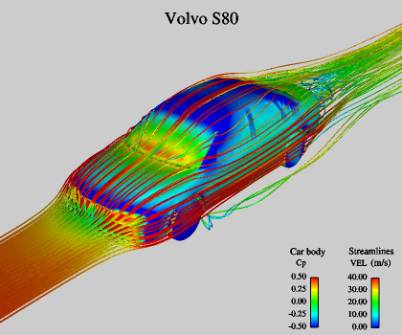
March, the 19 st

Guido BURESTI
Professor in Fluid Mechanics at the Department of Aerospace Engineering
Universita' di PISA (Italy) .
Abstract
In the project of high-performance road vehicles it is essential that aerodynamics be adequately taken into account during the whole design procedure in order to assure the achievement of the expected objectives in terms of maximum velocity and handling qualities. In the lecture, after a short introduction on basic car aerodynamics and a brief historical overview of its application in the design process, the specific aerodynamic requirements for high-performance vehicles will be described and discussed. Attention will then be focused on the methods, both experimental and computational, that are presently available to obtain the desired aerodynamic loads. In particular, the evolution of the design procedures within Ferrari Auto in the last 15 years will be described, and some examples will be considered in more detail. Finally, possible future developments and research topics will be suggested.
April, the 30 th

Simone SEBBEN
Senior CFD engineer - Volvo Car Corporation, Fluid Dynamics Center
Abstract
CFD is today an important tool in the vehicle industry around the world. At Volvo Car Corporation, CFD has become an integral part of the engineering and design optimization process. More and more CFD is used as a tool to help making project decisions and not only serve as support or input to physical testing. The CFD group at Volvo Car Corporation supports project decisions with virtual development in the following areas: aerodynamics, dirt and snow deposition, aeroacustics, thermodynamics and climate systems .
A general overview of CFD at Volvo Car Corporation today will be presented. Tools and methods used for aforementioned applications will be discussed. Special attention will be given to aerodynamics in the vehicle development process. How do we make an impact on the product using CFD? A short description of some of our current and future research topics will also be presented.
May, the 7 th

Per ELOFSSON
SCANIA CV AB, Fluid Mechanics
Aerodynamicist
Abstract
This lecture will describe the role of experimental fluid dynamics in the design process for automotive vehicles. In addition, the lecture will present an overview of truck aerodynamics and highlight the differences compared with passenger car aerodynamics.
Wind tunnels designed for automotive testing will be presented and the function of the wind tunnel systems that are specific for vehicle aerodynamics will be explained. Traditionally, experimental methods for automotive testing have been aimed at flow visualization and direct force measurements using an external or internal force balance. In today's vehicle testing, balance measurements are often used together with pressure and velocity field measurements. The additional pressure and velocity data are used in wake-analysis methods and the results help to identify which vehicle regions that need to be improved.
Examples from project and research work at Scania will be used to illustrate the topics above.
May, the 14 th

Matthew John LAIGHT
Renault F1 (formerly Benetton Formula Ltd)
Senior Aerodynamicist and Head of CFD.
Abstract
Discounting a driver's particular aptitudes, aerodynamic improvements, as well as engine power, chassis design and tyre performance, are the major factors in determining a race-car's performance. In particular, advances in the understanding of vehicle aerodynamics, especially in the importance of aerodynamic downforce as opposed to drag reduction, have enabled enormous increases in cornering speeds of race cars.
A wide variety of cars, ranging from modified production cars to open-wheeled formula-one and Indy cars, are raced and, although racing can seem to be dominantly a commercial/media-led business, it is in fact a proving ground for much new technology and is seriously competitive between major automotive players. This seminar will provide an overview of race-car aerodynamics and highlight the differences between production-car aerodynamics and those important to both open-wheeled and enclosed-wheeled race cars. There will be discussion of both external and internal aerodynamics, as well as the experimental and computational tools used to analyse these flow regimes. Results from F1 model testing will show the importance of seemingly small modifications and the emphasis that competitors put on small percentage increases in downforce in an attempt to gain race advantage.
May, the 21 th

Luciano MARIELLA
FERRARI F1 GeS
Head of CFD group.
Abstract
General overview on the main mathematical models available for CFD external aero simulations: Navier-Stokes, Eularian, Panel method, etc.
Main features, requirements and limits for each mathematical model, focusing the attention on the applicability to a realistic F1 car shape.
Close-up to the "Reynolds Averaged Navier-Stokes" model: mesh generation requirements, available turbulence models, precision, reliability and repeatability of numerical test.
Practical examples of CFD use inside the Aerodynamic Technical Office of Ferrari GeS: full car external aero simulations, wings development and improvement, thermal problems (like exhausts gas and brake cooling).
Realistic future developments for the CFD tools applied to the aerodynamic project of F1 car.


